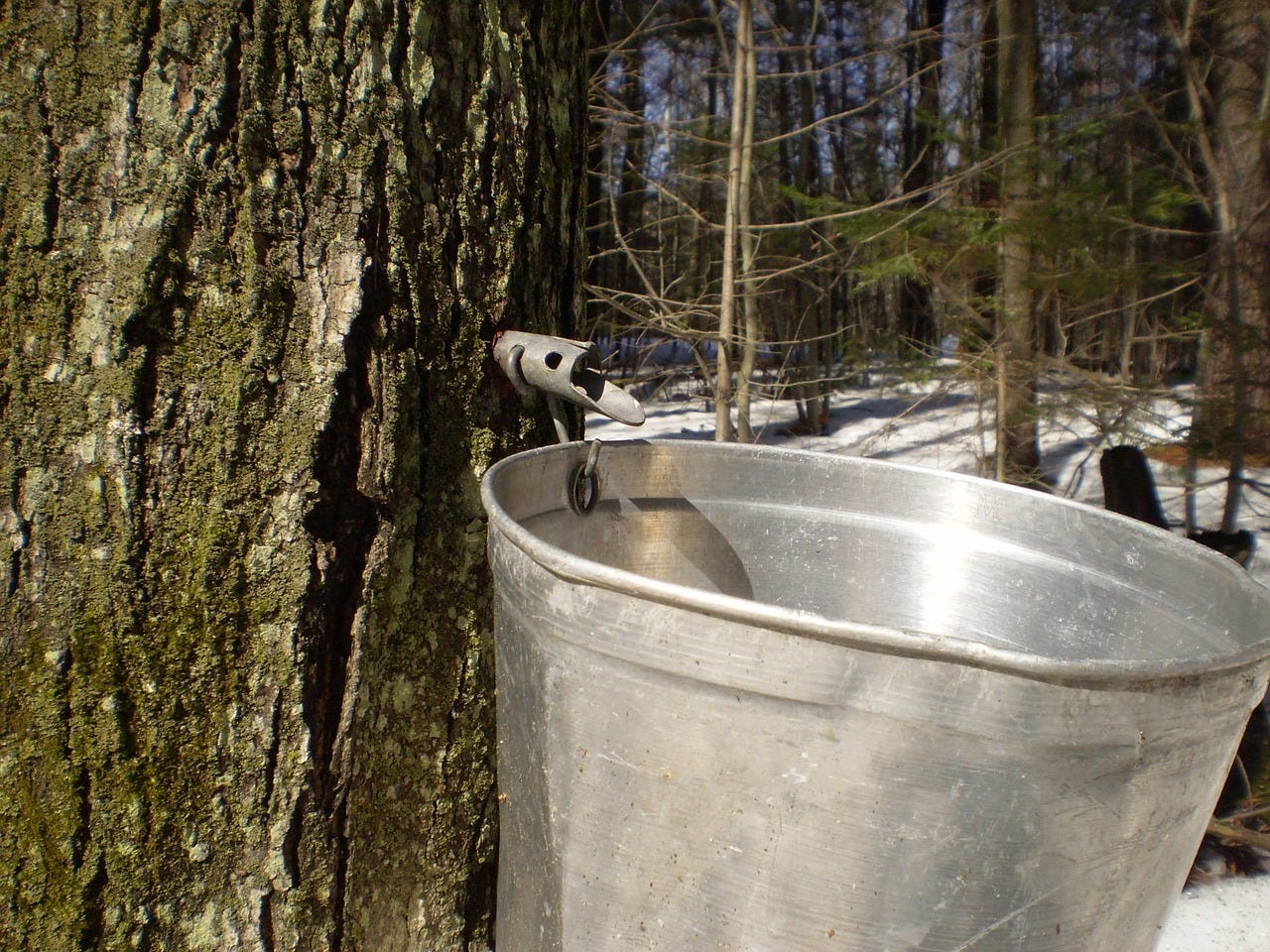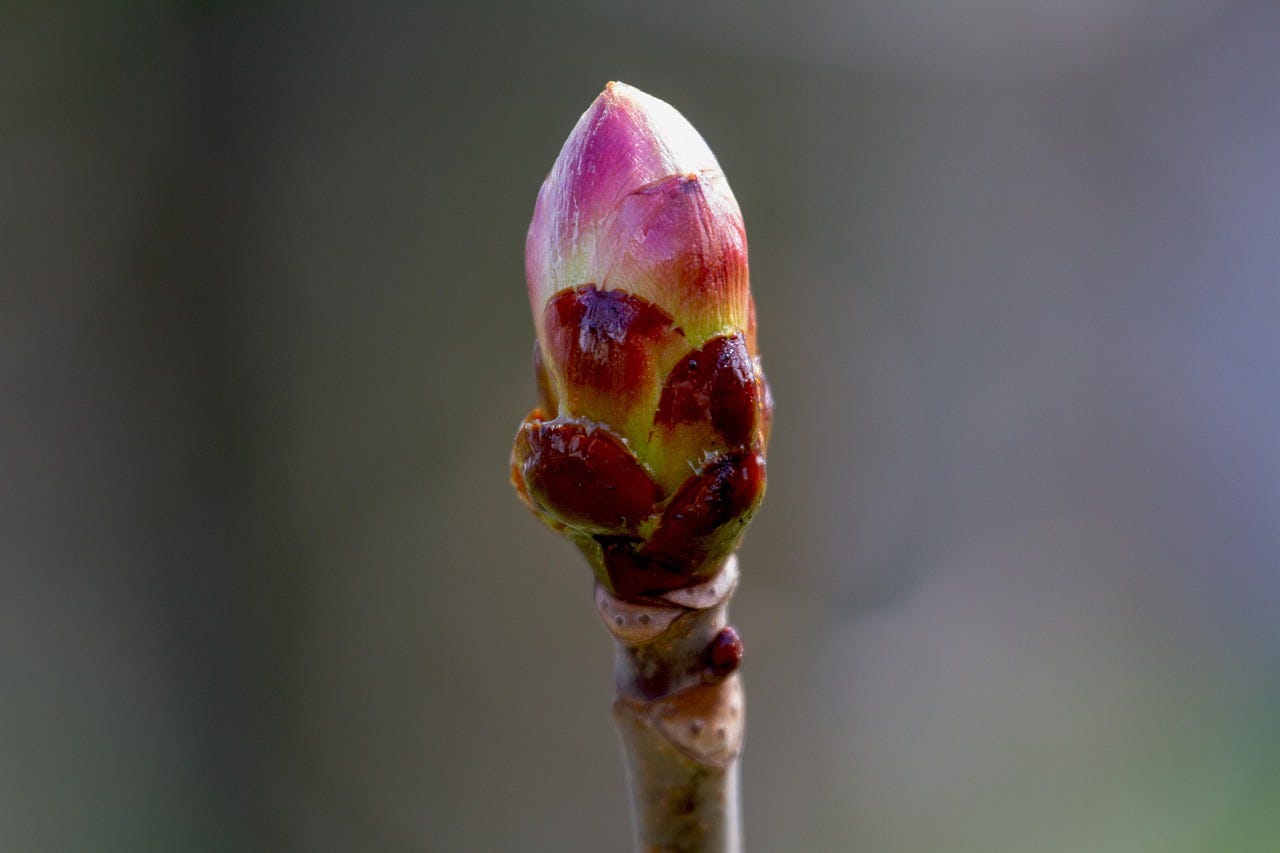Maple Mysteries 1: How maple syrup is made
If you want to learn how maple syrup is made, going to Canada would be the obvious choice. I’ll take you to Route 66.
Dear Climate Culinarians,
Not to spoil your appetite, but we are going to look at something similar to bloodletting. No humans will be harmed, though, nor animals. Plants? Well, trees play a starring role in this month’s newsletters: In March, Climate Culinarians is all about maple syrup. It’s harvest season for the stuff that will become a sweet indulgence dripping from pancake stacks.
(Unless you use pancake syrup. That’s just sugar that has never been near a maple tree.)

In today’s issue, I’ll write about how real maple syrup is made, how I learned about it, and why maple syrup producers worry about climate change. But first … bloodletting?!?
Maybe you can come up with a better comparison for this: You tap a tree’s lifeline. Without killing it. And this unusual type of harvesting is not a recent discovery.
Millennia ago, Indigenous peoples in North America figured out how to coax sweet juices out of sugar maple trees. And several tribes run maple syrup businesses today. Stories about the origin of this practice abound, too (watch this video series from the Anishinaabeg or this video at the Nulhegan Abenaki’s website).
How is maple syrup made?
Harvesting the maple trees’ sweet juice requires frost. And thawing. And frost. And … you get it. This cycle drives sap through a sugar maple tree, and when you tap a whole into its trunk, it will flow. But this is just the first step of how maple syrup is made.
My path to learning about maple syrup was actually a road: Route 66. In 2023, I researched for a cookbook following the iconic route from Chicago to Los Angeles. While my co-author Gabi Frankemölle dug into recipes along this route, I looked for food stories representing the different regions. And in central Illinois, I found a maple grove and contacted* its owners, Debby and Mike Funk.
* Full disclosure: Sadly, the book budget did not allow me to visit Funk Grove Maple Sirup (my co-author was the one to travel Route 66, but that’s a different story). So I had a video chat with the Funks.
The first thing I learned from them: I came at the wrong time. They were busy.
Why winter is the busiest time for maple syrup farmers
Ice cold times are the only season when harvesting tree sap makes sense. In Illinois, maple season starts in January. In New York, it’s more often in early March.
“When it gets below freezing, the vessels in the tree constrict, and that acts like a straw that will draw the sap up from the roots”, says Debby Funk. And when it thaws, the tree sap flows down. “So ideally, we would have very cold nights and but warmer days for the sap to flow”, says Mike Funk.

They carefully hammer a tap into the tree’s trunk, just enough to hit the tube-like tree vessels where the sap flows. And when it thaws after a frost, sap flows out into a bucket. “One tap hole can run up to four gallons”, says Mike. Depending on the tree’s size, he might run two taps.
But there is a catch to harvest sugar maple tree sap. Actually, there’s two.
You need mature maple trees. “They need to be 14 inches in diameter before you put one tap in”, says Debby. “And it takes a sugar maple about 40 years to get that big.”
You need a lot of tree sap for a little syrup. “To turn that clear, watery liquid into the thick brown syrup that everybody knows and loves, we have to boil it” , says Debby. You roughly need 50 gallons of tree sap for 1 gallon of syrup, according to Mike.
Maple tree sap isn’t that sweet. How does maple syrup get its taste?
Maple syrup contains 66 percent sugar. Maple tree sap contains only about three percent. To concentrate the sugar, you need to get rid of water. To add to the iconic taste, you also make the sugar caramelize.
The main method to do both is boiling the tree sap. Mike and Debby do that, too. But first, they use reverse osmosis to save energy. They also do what they can to switch from burning fossil fuels to using renewable energy. Because as farmers, they are concerned about climate change.
How does climate change affect maple syrup?
Regional growing conditions like temperature and rainfall shift with climate change – and sugar maple trees most likely won’t appreciate that. Mike and Debby’s grove in Illinois already grazes the limits. A little further to the west, the climate is too dry for a sugar maple’s taste. Further south, it’s too warm.
Climate change confronts maple syrup producers with an additional problem.
“Our seasons have become much more unpredictable”, says Debby Funk. Apart from general warming, temperature hikes and drops are getting more extreme.
In the Funks’ area in central Illinois, February used to be cold at night, cool during the day, swinging between the 20s and 40s Fahrenheit. Now, a winter day can jump into the 60s. Sounds like spring! And sugar maple trees listen: They get ready to grow flowers and leaves.

However, once sugar maple tree buds begin to swell, the sap’s chemistry changes. Its taste is off. According to Mike and Debby Funk, “buddy sap” doesn’t make good syrup. No matter if it freezes again: After a balmy day, their maple season is cut short. Which usually means less maple syrup. And large temperature swings are not the only problem.
3 climate change effects on maple trees:
Later freeze and earlier spring temperatures cut harvest short.
Trees are harmed by pests that would previously have died off in deep frost.
New tree competition arrives in the forest.
Sugar maples have an advantage in the forest because they are among the first to bloom and put out leaves. They can eat all the light while the other local trees are still dormant. But with a general rise in temperatures, fast-growing trees from warmer climates start moving in. Sugar maples may lose their edge.
When I ask Debby about hope in times of climate change, she says: “We know it’s already happening, but my hope is that it doesn’t get so much worse.” She hopes that governments will do what needs to be done to cut carbon emissions. And it gives her hope to know that there are a lot of people out there working towards addressing climate change and doing what they can.
There are indeed a lot of things that we can do. Even specifically in regards to sugar maples! That’s why part 2 of my Maple Mysteries will be about solutions and actions you can take, and you will also meet ... nope, you gotta wait and see.
Eat, read, repeat!
Petrina
Climate Culinarians is a project by me, Petrina Engelke. I write about climate, food and the U.S., and I help other writers turn their ideas into a book people want to read. In other words: I’m a journalist and a book coach.



This was such an interesting read - what a great post, Petrina! I’m using quite a bit this week with my pancake challenge so it’s great to know the history, process and environmental factors behind it. Thanks for sharing!
This is fascinating, Petrina! I'm a fan of real maple syrup (usually bring some back from trips to BC, Canada) and this is a great post on the process, the trees, and climate change. Thanks for an interesting read!